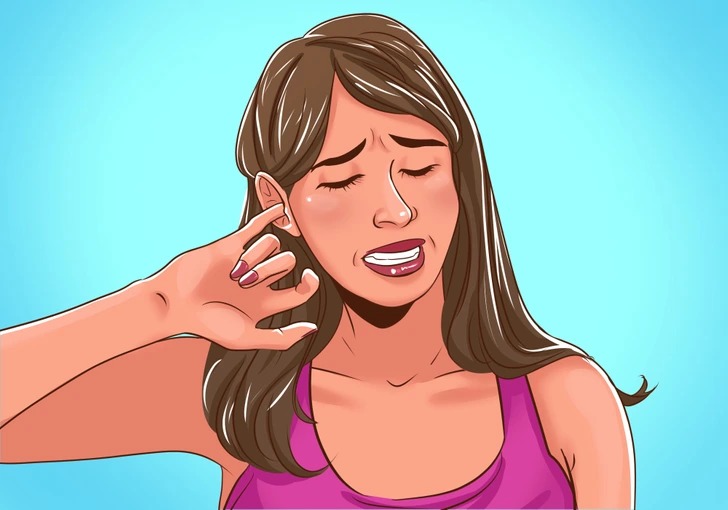SEE IT BELOW
Ear infections are generally associated with children, yet they still affect approximately 20% of adults. This is a common occurrence since adults, like children, are susceptible to bacteria and viruses. Recognizing the symptoms of ear infections early is critical for timely and successful treatment, as these infections can be extremely unpleasant.
1. Discomfort or pain

Initially, you may feel a dull aching in your ear, especially after pulling the earlobe or squeezing the tragus. Over time, you may get a sense of fullness within your ear. In more serious cases, the discomfort may spread to your face, neck, or the side of your head.
2. Itchiness

It may start as mild itching in the inner ear canal and eventually worsen if the infection is not addressed.
Neglecting to treat the infection may cause enlarged lymph nodes. This can cause a fever since full obstruction of your ear canal is more likely.
4. Redness on the inside and on the outside of the ear
In mild situations, this symptom may not be present, but in more severe cases, your hearing may be compromised. You may notice a decreased capacity to hear or a persistent ringing deep within your ear.
It may start as mild itching in the inner ear canal and eventually worsen if the infection is not addressed.
Neglecting to treat the infection may cause enlarged lymph nodes. This can cause a fever since full obstruction of your ear canal is more likely.
4. Redness on the inside and on the outside of the ear
In mild situations, this symptom may not be present, but in more severe cases, your hearing may be compromised. You may notice a decreased capacity to hear or a persistent ringing deep within your ear.
Symptoms You Should Not Ignore
1. Severe ear pain – Intense or worsening pain may indicate a severe infection.
2. Hearing loss – Sudden or gradual hearing loss could suggest fluid buildup or damage.
3. Fluid or pus drainage – Yellow, white, or bloody discharge from the ear may indicate a ruptured eardrum or severe infection.
4. Persistent fever – A high or prolonged fever is a sign the body is fighting a significant infection.
5. Dizziness or balance issues – This could mean the infection is affecting the inner ear, which plays a role in balance.
6. Swelling behind the ear – Swelling, tenderness, or redness around or behind the ear might suggest a serious condition like mastoiditis.
7. Tinnitus – Ringing or buzzing in the ear can accompany infections and might require medical attention.
8. Facial weakness or paralysis – This rare symptom could indicate a severe infection affecting nearby nerves.
Common Causes of Ear Infections
1. Bacterial Infections – Bacteria like Streptococcus pneumoniae and Haemophilus influenzae are frequent causes.
2. Viral Infections – Viruses like colds, flu, or respiratory infections can lead to inflammation and fluid buildup in the ear.
3. Allergies – Allergic reactions can cause swelling of the Eustachian tubes, leading to fluid retention and infection.
4. Blocked Eustachian Tubes – Dysfunction of these tubes can trap fluid, creating an environment for infection.
5. Swimmer’s Ear (Otitis Externa) – Water trapped in the ear canal can lead to bacterial growth and infection.
6. Sinus Infections – Sinus congestion can contribute to middle ear infections due to pressure and fluid buildup.
7. Upper Respiratory Infections – Colds, flu, and throat infections can spread to the ears.
8. Ear Trauma – Scratches or injuries to the ear canal (e.g., from cotton swabs) can introduce bacteria.
When to See a Doctor
If symptoms persist for more than a day, worsen, or are accompanied by fever, drainage, or hearing loss, seek medical attention. Early treatment can prevent complications like hearing damage or the spread of infection.
